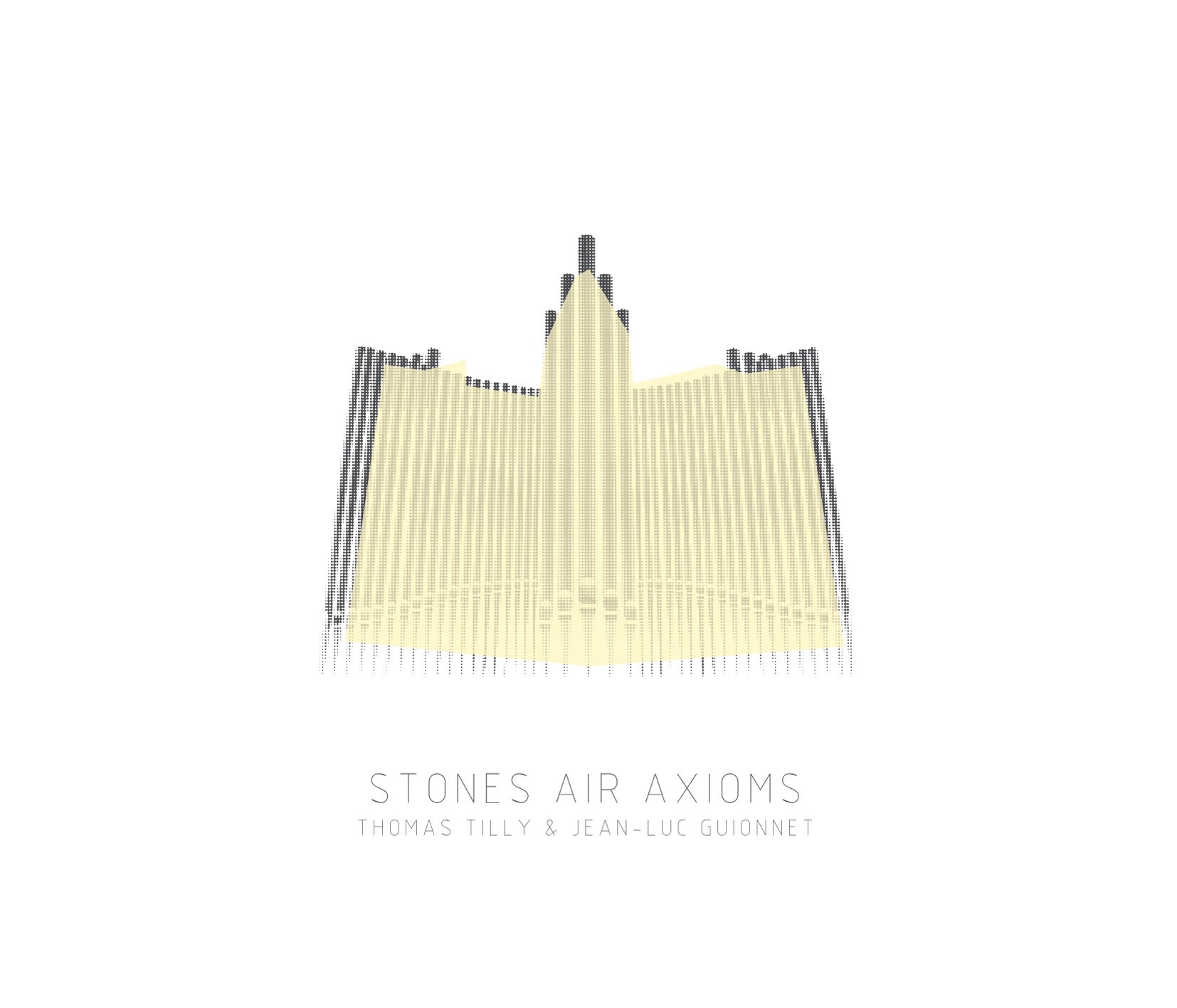THOMAS TILLY & JEAN-LUC GUIONNET |

|
BUY / ACHETER |
| THOMAS TILLY : RECORDINGS, MEASUREMENTS, COMPOSITION JEAN-LUC GUIONNET : CHURCH ORGAN, MEASUREMENTS |
Nowadays, information is circulating through cables and codes, however, before the advent of technology, the very acoustics of amphitheatres and religious buildings fulfilled this transmission function. The cathedral is one example. Partly conceived to enhance voice and music, it offers a wide resonance to support the religious discourse. These unique acoustics are part of its characteristics. This massive air volume is being enclosed and defined by stone. It acts as an amplifier of noise and forces listening and attention. The behaviour of the visitor/audience going through the building is thus being altered. The architecture constraining this air volume is complex and ruled by doctrine. The shape it is drawing constitutes both a symbol and an element of hierarchy for the listening situation within the space.
“Stones, Air, Axioms” is a sound work based on the relationship between the architecture and acoustics of St Pierre Cathedral in Poitiers. It is articulated around informal acoustic experiments and a study of the site. It is restricted by the range of noises potentially generated by the site : on one hand the specific sonic environment of the building and on the other hand the organ used here as a sound generator. The use of the instrument has been defined by calculations combining metric measurements collected on site and the speed of sound in the air. Each time, the instrumental performance is being recorded on location and constitutes a great part of the material the piece is made of. This work has been developed into four distinct parts, each dealing with one aspect of the relation between sound and architecture.
This piece has been specifically created as part of the MicroClima festival in 2010. It has been supported by the Poitou-Charentes council, the Espace Mendès-France and the MicroClima festival.
![]()
Comme l’information passe aujourd’hui par les câbles et les codes, c’est l’acoustique des amphithéâtres et des édifices religieux qui jouaient ce rôle avant l’avènement de la technologie. La cathédrale en est une illustration. Conçue en partie pour élever la voix et la musique, elle offre une large résonance pour porter le propos religieux. Cette acoustique unique est une de ses caractéristiques. Ce volume d’air massif est contraint et défini par la pierre. Il agit comme un amplificateur du bruit et impose l’écoute et l’attention. Le comportement du visiteur/auditeur qui traverse le lieu s’en trouve alors modifié. L’architecture contraignant cet air, est elle complexe, et régie par la doctrine. La forme qu’elle dessine est à la fois symbole et élément hiérarchisant la situation de l’écoute dans l’espace.
“Stones, Air, Axioms” est une pièce basée sur la relation entre l’architecture et l’acoustique de la cathédrale St Pierre, de Poitiers. S’articulant autour d’expériences acoustiques informelles et d’une étude du site, elle est contrainte par ce que l’espace peut générer comme bruits : d’une part l’environnement sonore propre à l’édifice et d’une autre : l’orgue, utilisé ici comme un générateur de sons. Le jeu de l’instrument est défini par des calculs croisant mesures métriques relevées dans le lieu et vitesse du son dans l’air. Ce jeu est à chaque fois enregistré dans l’espace et constitue une grande partie de la matière constituant la pièce. Ce travail se développe en quatre parties indistinctes, abordant chacune un aspect du rapport entre le son et l’architecture.
Cette pièce est une création réalisée dans le cadre du festival MicroClima 2010. Elle a été soutenue par la région Poitou-Charentes, l’espace Mendès-France et le festival MicroClima.
|
| ||





